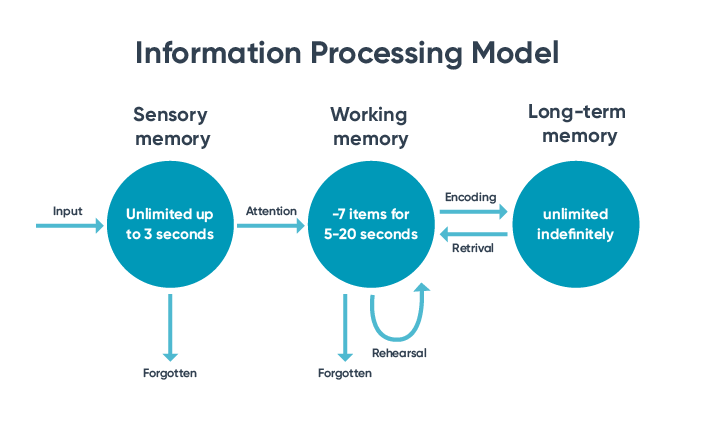5 ways to boost knowledge retention following e-learning courses
It is a fact of life: we all forget things. But interestingly, there is often a pattern to our forgetfulness. By studying this pattern, researchers have discovered different psychological tricks which can mitigate forgetfulness and boost knowledge retention of useful information.
An important area in which this is applied in practice is in training programmes. Training and e-learning are rendered redundant if the information is not remembered following the course. Ensuring that key learning points remain embedded in the learner's mind enables them to translate their learnings within their job roles and is essential for the success of a training program.
Luckily, there are several practices that e-learning design can employ to improve knowledge retention.
Knowledge retention strategies
We’ve rounded up the five top strategies to look out for in your e-learning courses to be confident that the training your employees are receiving will stick.
Avoid information overload
Although we all have different learning styles, people process information in similar ways.

Source: Cognitive Load Theory - gerardfriel.com
However, the act of processing information is put at risk when too much needs to be processed at once. This is known as cognitive overload and is one of the main reasons learners fail to retain knowledge.
As such, courses should not be crammed full - any piece of included content should be critical to the learning outcome.
Courses should be streamlined so they are simple to comprehend and easily digestible to manage the cognitive load on the learners’ brains.
Consider delivering training in bite-sized chunks, breaking learning down to avoid information overload. Look for e-learning courses that leverage microlearning techniques, such as short videos, animations, audio snippets, tests and quizzes.
Tell a story
It is far easier to learn and remember facts when there is an emotional connection to the subject matter. Constructing a narrative with characters and context that learners can relate to will help embed the key learning objectives and boost learning retention.
Employing an e-learning management system that allows you to create your own bespoke courses can help reinforce this relatability, enabling you to use language and terminology that is familiar to everyone and promote a consistent Health & Safety message.
Encourage learners to discover learning points for themselves
Individuals typically learn best and retain more information - and for longer - when they are able to explore and discover the knowledge for themselves. But it can still be useful to guide learners through.
E-learning with an interactive element is key to facilitating this ‘guided exploration’ style of learning. By encouraging learners to become active participants, you are providing the opportunity for them to become fully engaged with the content.
Integrating a wide range of multimedia, such as images, animations and videos can aid interaction and is a great way to improve knowledge retention for different learning needs.
Align content with learning outcomes
Crucially, content needs to be relevant for people to care. The more abstract a concept is, the harder it is to keep in mind.
So, if e-learning content is not relevant to their role, learners will not be interested and the training becomes redundant.
To ensure the content is aligned with the necessary objectives, it is beneficial for managers to first assess the desired learning outcomes. To do this, it may be useful to:
- Carry out a skills gap analysis
- Perform a thorough training needs analysis
- Learn all you can about your audience and their requirements
By tailoring the training and ensuring it is relevant, it will be easier to apply to the real world and in turn, will be retained for longer.
Provide opportunities for reflection
Giving the learner opportunities to reflect on and test their knowledge is a proven way to help them keep track of their progress and cement their learning.
To maximise information retention, courses should test small amounts of information (based on tightly defined learning objectives) often, for example, after each module or unit. This approach ensures participants avoid information overload and retain the specified details, instead of a broad range of less relevant material.
It can also help encourage learners to create action points that they can take away from the training and apply to their day-to-day jobs.
Tests and quizzes are useful tools to gauge the effectiveness of a learning module and identify any training gaps.
Look for e-learning that is underpinned with a learning management system, allowing you to capture data and have a fully auditable trail of actions required or taken.
Next steps
Training content that is streamlined, relevant and interactive will keep learners engaged and help ensure that knowledge is retained. But without a system to manage this training, it can be difficult to keep track, and demonstrating the many benefits of e-learning can become a challenge.
Our latest guide breaks down everything you need to know about e-learning management systems (eLMS) and how using one can support your business’s training efforts.

Your back to basics guide to e-learning management systems
Discover the fundamentals of an eLMS, the benefits of using one, and what to consider when choosing an eLMS.
Tags:
